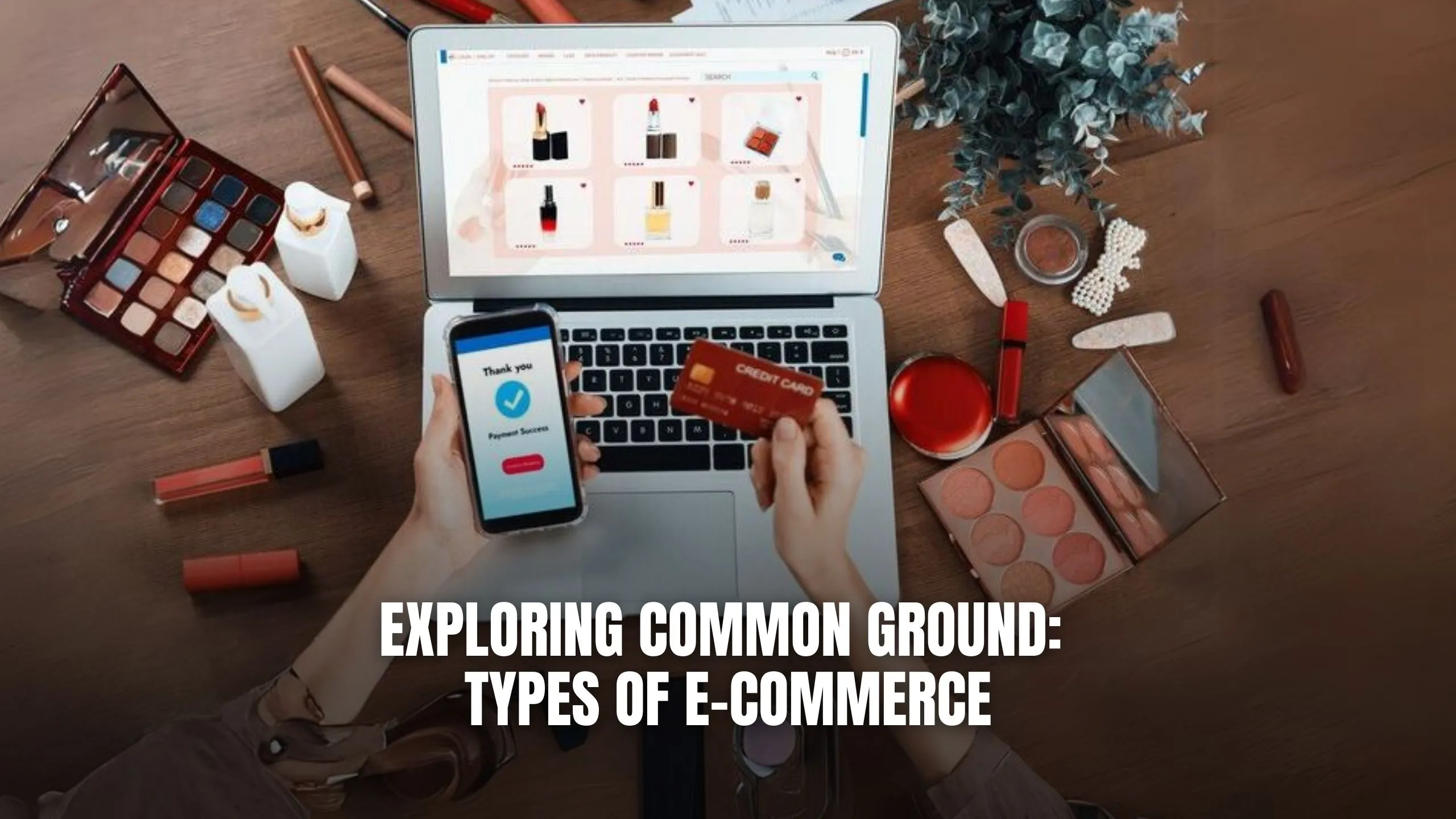Exploring Common Ground: Types of E-commerce


Exploring Common Ground: Types of E-commerce
E-commerce, or electronic commerce, encompasses various types of online transactions. Understanding the different types of e-commerce can help businesses choose the right approach to reach their target audience and achieve their goals. Let’s delve into some common types of e-commerce and explore their unique characteristics.
1. Business-to-Consumer (B2C) E-commerce
B2C e-commerce involves transactions between businesses and individual consumers. This type of e-commerce is perhaps the most familiar, as it includes online retail stores where consumers purchase goods directly from sellers. Examples include online marketplaces like Amazon and clothing retailers like ASOS.
Situational Example: Imagine a customer browsing through an online store like Amazon to purchase a new smartphone. They can compare different models, read reviews, and make a purchase with just a few clicks, enjoying the convenience of shopping from the comfort of their own home.
2. Business-to-Business (B2B) E-commerce
B2B e-commerce involves transactions between businesses, where one business sells products or services to another. This type of e-commerce is common in industries like manufacturing, where companies purchase raw materials or components from suppliers. Platforms like Alibaba and ThomasNet facilitate B2B transactions.
Situational Example: Consider a manufacturer sourcing parts for its production line. Through a B2B e-commerce platform like Alibaba, they can connect with suppliers worldwide, compare prices and specifications, and place bulk orders, streamlining the procurement process.
3. Consumer-to-Consumer (C2C) E-commerce
C2C e-commerce involves transactions between individual consumers, often facilitated by an online platform. This type of e-commerce enables individuals to buy and sell goods or services directly to one another. Examples include online auction sites like eBay and classified ad platforms like Craigslist.
Situational Example: A homeowner looking to declutter their garage can list items for sale on eBay. Meanwhile, another individual searching for vintage collectibles can browse listings, place bids, and purchase items from fellow users, fostering a thriving online marketplace.
4. Consumer-to-Business (C2B) E-commerce
C2B e-commerce occurs when individual consumers offer products or services to businesses. This type of e-commerce is less common but can include scenarios such as freelance services, influencer marketing, and user-generated content. Websites like Upwork and Fiverr facilitate C2B transactions.
Situational Example: A company seeking a logo design for a new product launch can post a project on Upwork. Freelance designers then submit proposals and compete for the opportunity to work with the company, offering their creative services in a C2B arrangement.
5. Mobile Commerce (M-commerce)
M-commerce refers to e-commerce transactions conducted through mobile devices such as smartphones and tablets. With the widespread adoption of mobile technology, M-commerce has become increasingly prevalent, allowing consumers to shop on the go. Apps like Amazon and mobile payment services like Apple Pay exemplify M-commerce.
Situational Example: A busy commuter waiting for a train can use their smartphone to browse through a fashion retailer’s mobile app. They can explore new arrivals, add items to their cart, and complete a purchase using secure mobile payment options, all while traveling.
Relevant SaaS Products:
- Shopify: Empowers businesses to create and manage online stores with ease, catering to various types of e-commerce.
- Alibaba: Facilitates B2B transactions by connecting businesses with suppliers worldwide, offering a wide range of products and services.
- eBay: Provides a platform for C2C e-commerce, enabling individuals to buy and sell goods in an online auction format.
- Upwork: Connects businesses with freelancers for C2B transactions, offering a diverse range of professional services.
- Square: Enables businesses to accept mobile payments and manage transactions seamlessly, supporting the growth of M-commerce.
Conclusion
By exploring the various types of e-commerce, businesses can gain insights into the diverse landscape of online transactions. Whether it’s B2C retail, B2B procurement, or C2C marketplaces, understanding these different models is essential for navigating the digital marketplace effectively.
Ready to Dive Into E-commerce?
Discover the best e-commerce tools and platforms to elevate your online business with Subscribed.fyi. Unlock exclusive deals on essential e-commerce SaaS products and streamline your e-commerce journey. Sign up for free today and unlock the power of e-commerce innovation!
Relevant Links:





